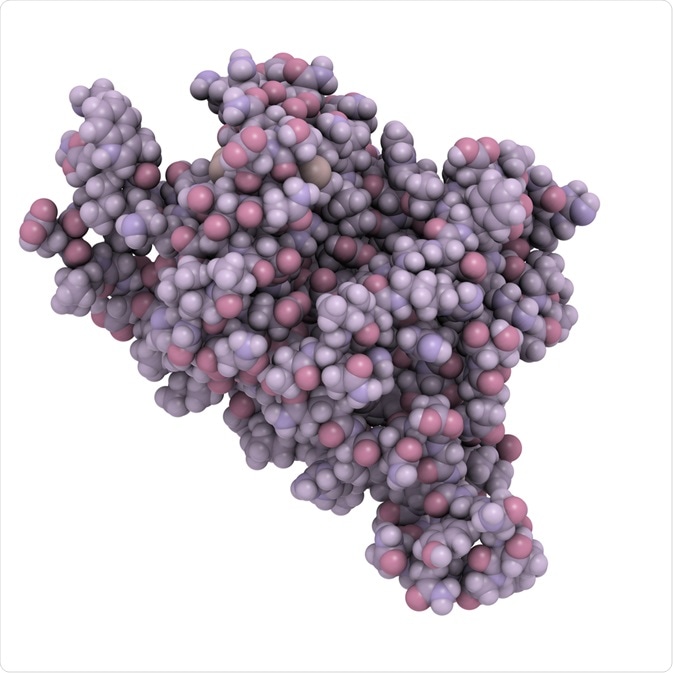The interleukin-6 receptor (IL-6R) is the receptor that IL-6 binds to in order to initiate the body’s responses to inflammation and infection.

Interleukin 6. Image Credit: StudioMolekuul/Shutterstock.com
In what is referred to as “classical signaling”, IL-6 exerts its effects by binding to IL-6R, a glycosylated type 1 membrane-bound protein of around 80 kDa. This binding is mediated by domain 2 and 3 residues on IL-6R. Upon ligand binding, IL-6R associates with a signaling receptor protein called gp130, which then undergoes dimerization.
This leads to the activation of Junase kinases and the phosphorylation of tyrosine residues within gp130 and events that activate the ras/raf/Mitogen-activated protein (MAP) kinase (MAPK) pathway.
Signal transducer and activator of transcription (STAT) factors are also recruited, which undergo phosphorylation, dimerize and then move into the nucleus to activate target genes.
Only a small number of cells express this membrane-bound IL-6R and can therefore respond to IL-6 alone. Examples include neutrophils, macrophages, hepatocytes, and some types of T cells. Gp130, on the other hand, is expressed on the surface of all cells. Cells that only express gp130 do not respond to IL-6 alone. However, these cells do respond if IL-6 is bound in a complex to the soluble form of IL-6R (sIL-6R).
Generation of sIL-6R therefore dramatically increases the range of cells that can be targeted and activated by IL-6. This activation of cells by the IL-6/sIL-6R complex is referred to as “trans-signaling.”
The sIL-6R is formed through proteolytic cleavage of the precursor IL-6R, which is carried out by membrane-bound metalloproteases of the ADAM (a disintegrin and metalloprotease) family. The sIL-6R binds IL-6 with a similar affinity to IL-6R. The IL-6/sIL-6R complex then mediates the activation of gp130 in either an autocrine or paracrine manner.
Trans-signaling activation of gp130 is essential for recruiting lymphocytes to areas of inflammation through the control of chemokine expression. This IL-6 trans-signaling also promotes the proliferation of T cells and regulates the expression of adhesion molecules on endothelial cells.
References
Further Reading
Last Updated: Feb 17, 2021